I string up the fly rod, slip on my vest and wait. The preserve opens at 9 a.m. these days, and I’m early. The air is unpleasantly smoky, but I lean on the wooden fence with anticipation.
It’s a mid-August morning, and I’m at The Nature Conservancy’s Silver Creek Preserve in southcentral Idaho, one of my favorite places.
As always at Silver Creek, the familiar questions circle through my head. Will the mayflies be hatching? (Yes, I can see a few already). Will the trout be rising? (No doubt). Will I be able to fool them? (Probably not). What fly should I start with? (This is going to take a while).
The raspy, trilling calls of sandhill cranes pull my eyes away from the fly box. I strain my eyes to see them, but it’s tough through the smoky haze.
And then, it’s time. I walk with purpose, towards my favorite spot, in a fish-and-mayfly-induced trance. Nothing can break me out of it. Except, well, the thud of hooves.
I stop, expecting deer. Instead, I see bulbous noses, ungainly legs, humped backs. The two animals stop after trotting a few paces. Young moose. Just 30 yards away.
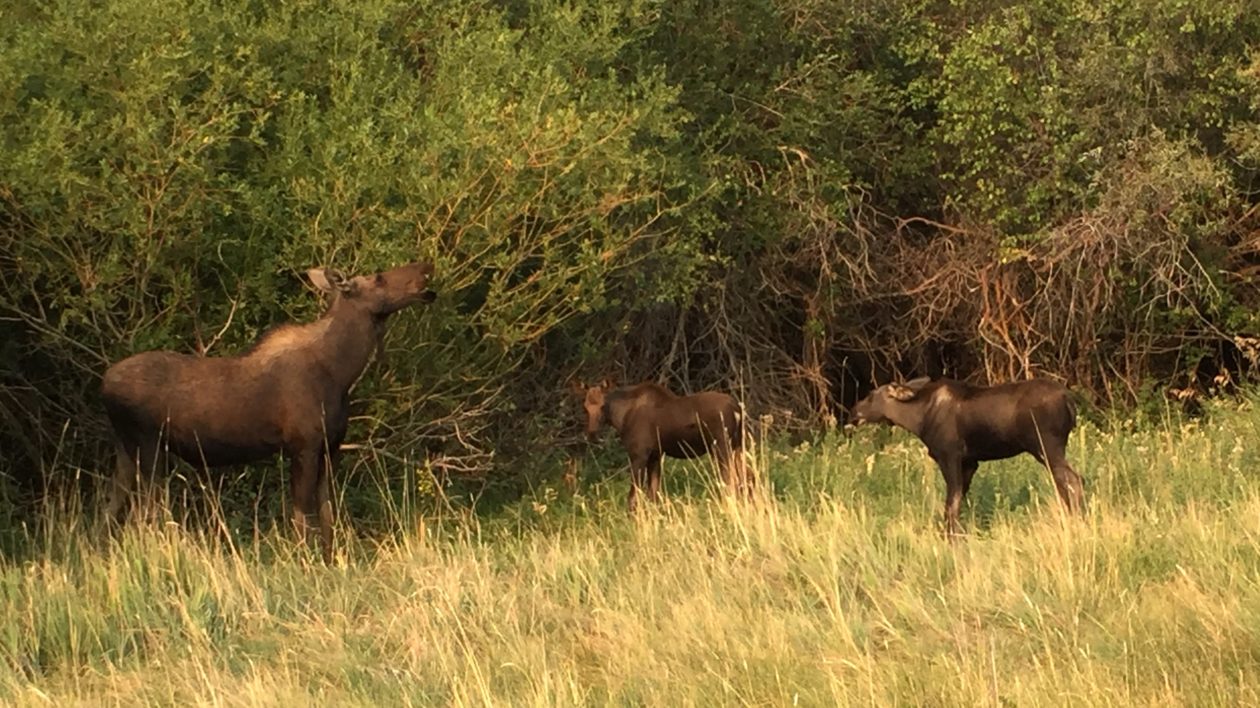
Excitement gives way to nervousness as I scan for the mama. I’ve heard the stories of charging moose. But then she steps into the open, standing beside the youngsters. She gives me the once over, then decides I’m not worth the bother and begins munching on willows. I continue watching. The youngsters are preoccupied. The mother occasionally jerks her head up to stare my way, but quickly resumes her feeding.
Eventually, the animals walk slowly towards the creek. I linger, watching as they disappear from view. And I know this: whatever else the day brings, however good or bad the fishing, it was worth it.
It’s always worth it.
A Creek Runs Through It
Twenty years ago, I began my career with The Nature Conservancy as communications director for the organization’s Idaho chapter. My very first day on the job, I wrote a press release about a conservation easement on land bordering Silver Creek. Not long after, I visited Silver Creek. And so it began. Over the years, I’d write many different kinds of stories about Silver Creek and visit it for many different reasons.
It’s true that my job would also lead me to many other places, and to write hundreds of other stories. But however I choose to define my career, it’s clear: this creek runs through it.
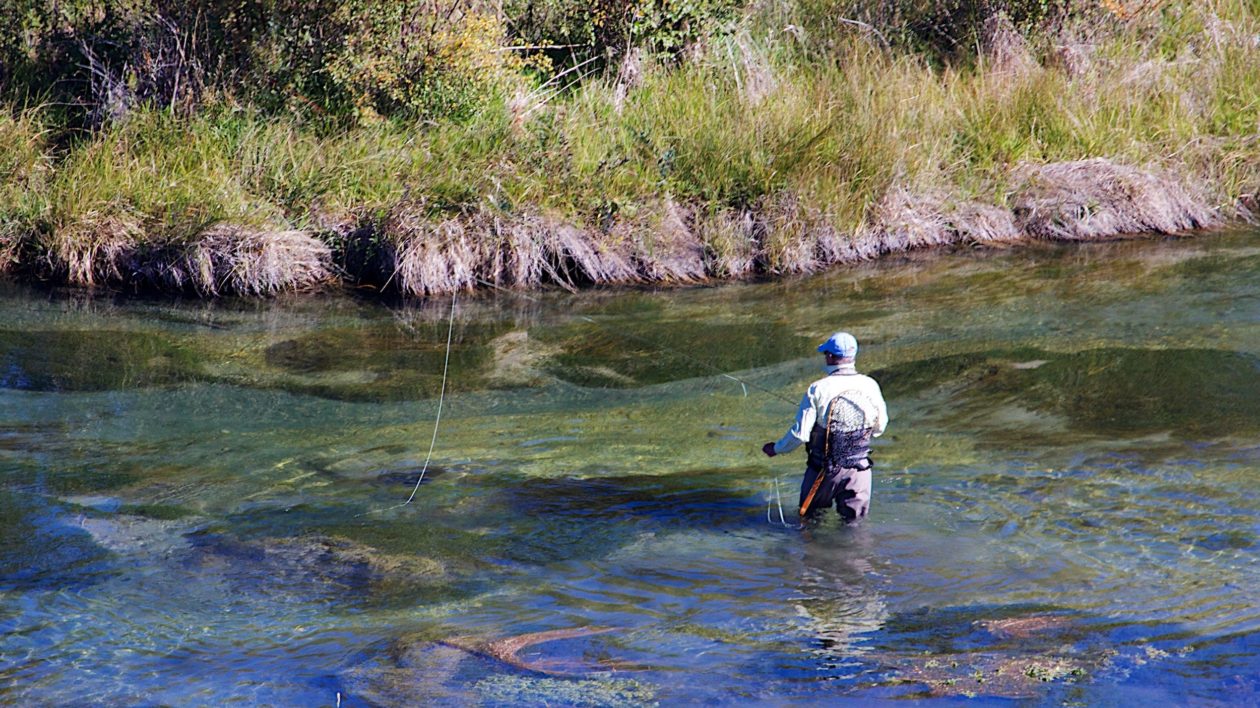
I’ve written the complete history of Silver Creek conservation many times before and so will keep it brief here. The Conservancy acquired 479 acres along the creek in 1976, its first major acquisition in Idaho. The reasons for the purchase would be apparent to nearly anyone. The spring creek was a ribbon of riparian habitat in the Idaho high desert, drawing all manner of wildlife. It was already a famous blue-ribbon trout stream. And the views were postcard perfect.
At the time, the project was hailed as a major success for The Nature Conservancy and for conservation, which it clearly was. I imagine that it was also viewed as an endpoint: mission accomplished, Silver Creek saved. Which it was not. Well, not exactly.
If you give nature half a chance, many wondrous things happen. Look at the early photos of the preserve, and the habitat along the creek looks hammered if not completely vanquished. A lot of the vegetation was grazed down to the soil. It didn’t take long for riparian plants to bounce back, as they often do when protected.

And as the habitat improves, the wild creatures will find it, with no help from conservationists. Take the moose. In 1976, someone reporting a moose sighting would have been considered mistaken if not delusional. A moose in the desert? Seriously?
Today, moose sightings are commonplace. These wide-roaming ungulates found their way to a perfect island of habitat, with water and willows providing their needs.
But Silver Creek Preserve doesn’t exist in isolation. Over the years, the Conservancy has evolved its approach, helping ensure the preserve and the entire ecosystem are protected and resilient. The work runs the gamut of conservation activity, including private land easements, restoration, research, sediment dredging, outreach and education and more.
Now, Silver Creek faces its biggest challenge yet. The one that is facing us all.
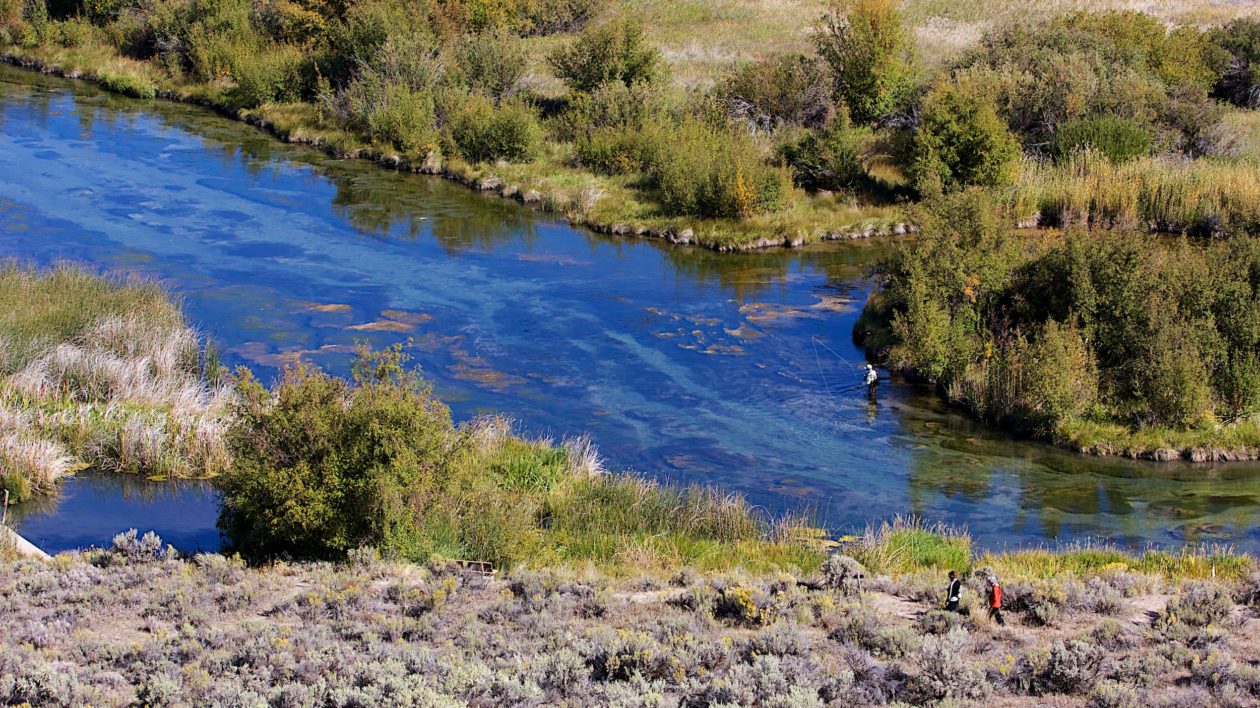
Warming Waters
July is prime time to fish the preserve. It’s when the tricos – tiny mayflies that exist in huge swarms – are hatching. The trout binge on these insects. Last year, I fished the trico hatch a couple of times and it was some of the best fishing of my life. In an essay about that experience, I suggested that the best days of Silver Creek were ahead.
This year, I did not fish the trico hatch in July, because the preserve was closed to fishing for the first time in its history. It was closed because water temperatures and dissolved oxygen levels were dangerously low for fish.
Anglers and the local community, those who know and love the preserve, supported the decision. It was necessary.
A prolonged drought, increasing demands on water and climate change have taken their toll, a story familiar to trout anglers throughout the American West this summer.
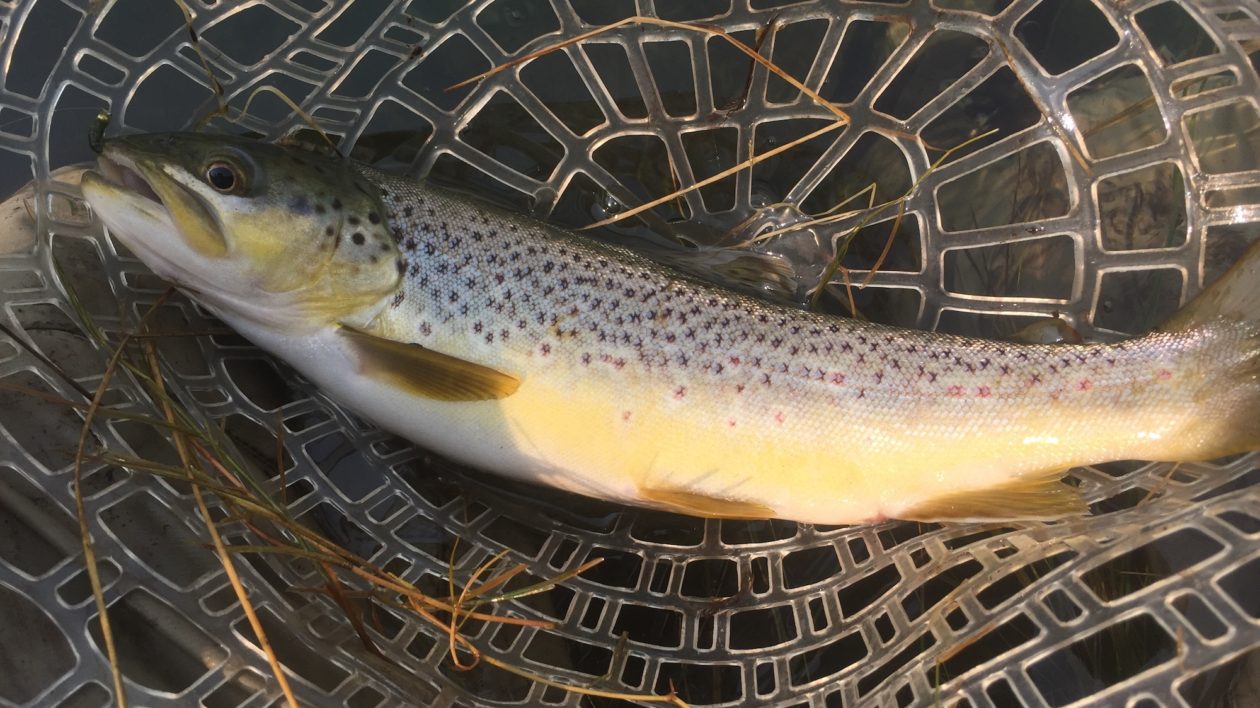
Silver Creek, in many ways, shows the two sides of the conservation coin. On the one hand, as well protected as the preserve may be, it cannot escape the impacts of a rapidly changing climate. Once conservation was about delineating a boundary of a protected area and calling it good. But that fortress mentality doesn’t work now (and really, never did). Policy decisions, global markets and global trends all eventually touch down on a spring creek in the Idaho high desert. It’s inescapable. So Silver Creek conservation ultimately depends on global conservation.
But the reverse is also true. Conservationists can address global challenges, but ultimately the work has to touch down somewhere. Conservation doesn’t exist in legislation, in agreements, in thought leadership. It exists on the ground, in the water, at places like Silver Creek. And there, ultimately, talk of scale evaporates as conservationists have to deal with real people, and real water, and an endlessly changing array of threats and opportunity.
It’s messy and complicated. In a world dominated by talking points and easy answers, conservation offers neither.
Even a seemingly discrete project like protecting a spring creek is not the work of a lifetime, but the work of many lifetimes. It is work that will never be completed.
Is it worth it?
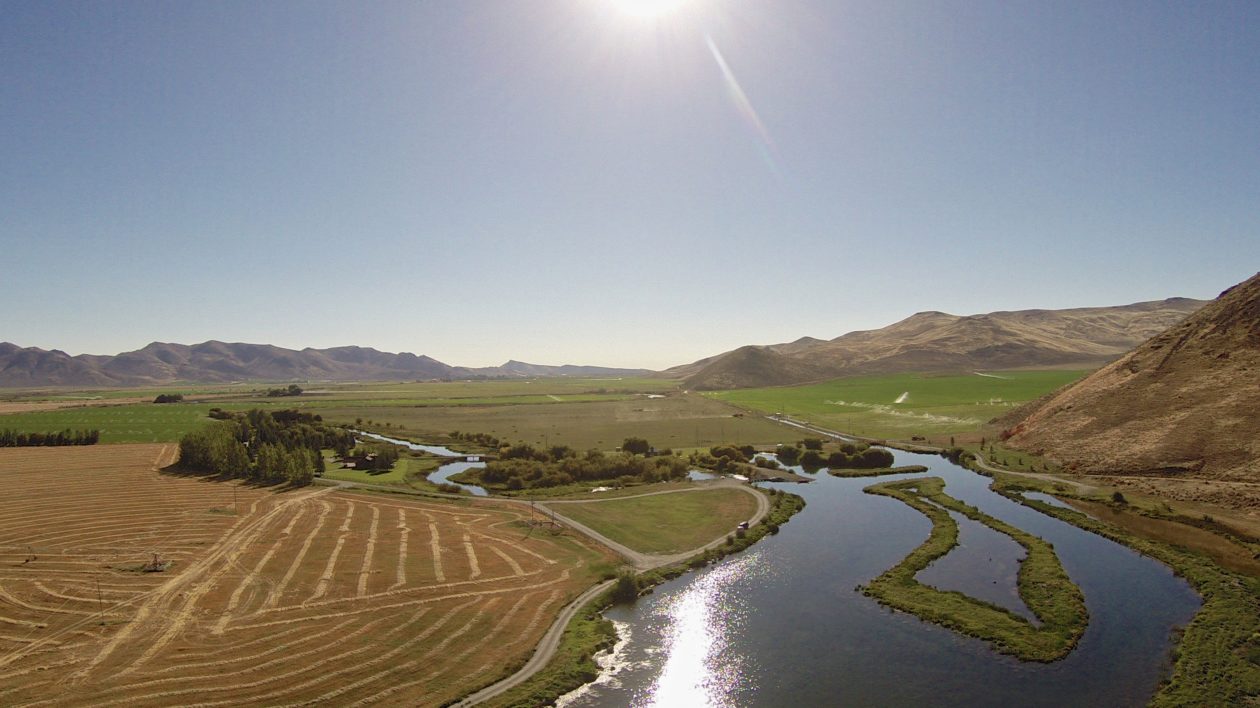
A Final Cast
Silver Creek reopened to anglers in August, a week before the day I spot the three moose.
The moose on this morning eventually disappear from view, and I make my way along the creek to my spot. I’m surprised to see no other anglers and happy to see the forms of rising trout. The hatch appears a mix of several insects – tricos, baetis and pale duns – complicating fly selection.
But within a few casts, I hook my first fish and it’s another blue-ribbon morning. I have to keep changing flies to match the varying hatches. Sometimes the trout refuse my offering, other times they smack it with gusto.
It’s a perfect morning, other than the increasingly thick smoke lending the scene a post-apocalyptic atmosphere.
And then, the trout quit rising. I make my way to the bank, and notice a small pod of fish still feeding downstream. I stalk along the edge of the bank all focus on the fish. Just as I get in casting range, my foot snags on a gnarled root, sending me splashing into the water.
Fish scatter. They reassemble in a deep run just seconds later, but they know I’m there. And as a seasoned Silver Creek angler, I know the game is up. These fish are legendarily wary. But still, I’m not quite ready to leave. The deep trench looks perfect for an underwater nymph.
I always fish dry flies – those that float on the surface – at Silver Creek. The hatches coupled with thick aquatic vegetation makes nymphing unproductive. But I figure it’s worth a try. I tie on a bead-head scud, imitating an aquatic crustacean that thrives in spring creeks.
I drop it into the trench, with no additional weight and no indicator. Even in the crystal-clear water, I lose sight of it. The fish nervously fin in the water, clearly still watching me. Then a trout opens its mouth, and I am attached to a fish.
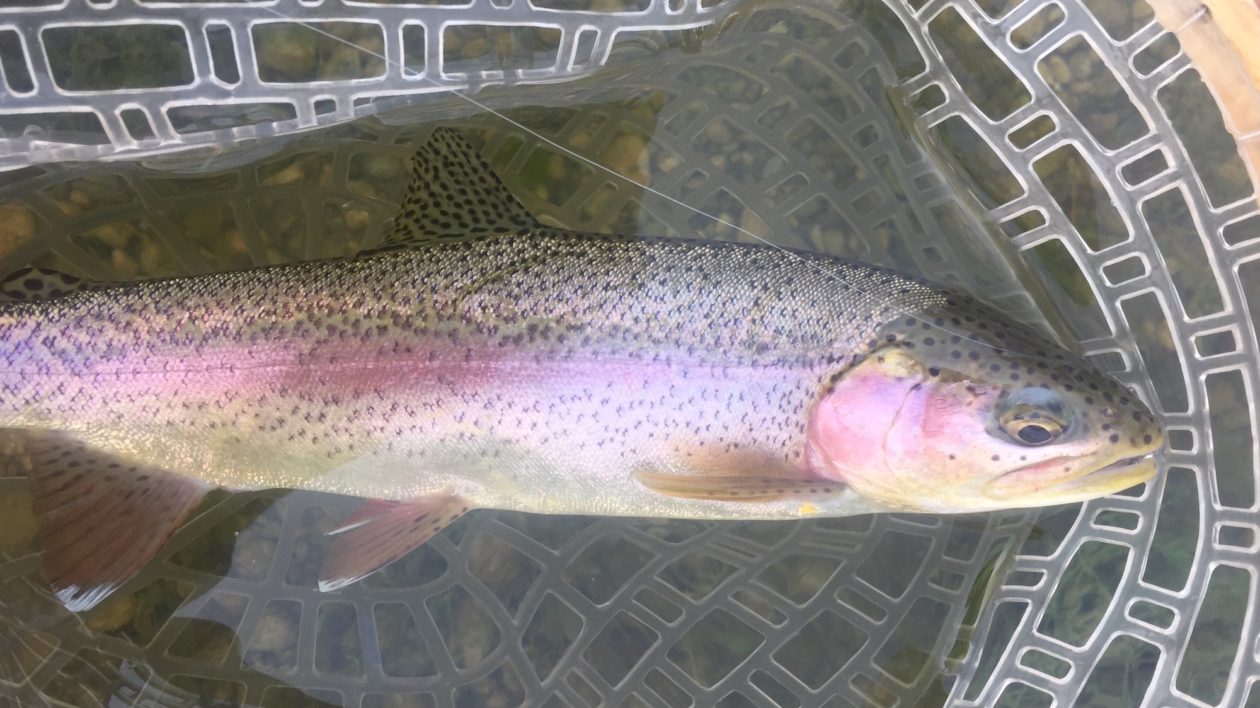
It is so unexpected, I quickly lose it. But I cast again, and another fish takes. This time I bring a healthy rainbow trout to hand, releasing the barbless hook with a quick flick of the wrist.
I sit down and inexplicably feel choked up. Whether due to my advancing age or the pandemic or both, I find I’m increasingly emotional at moments like this, filled with gratitude. It’s trout and moose and mayflies and running water. It’s more than that.
Is it worth it?
It’s always worth it.
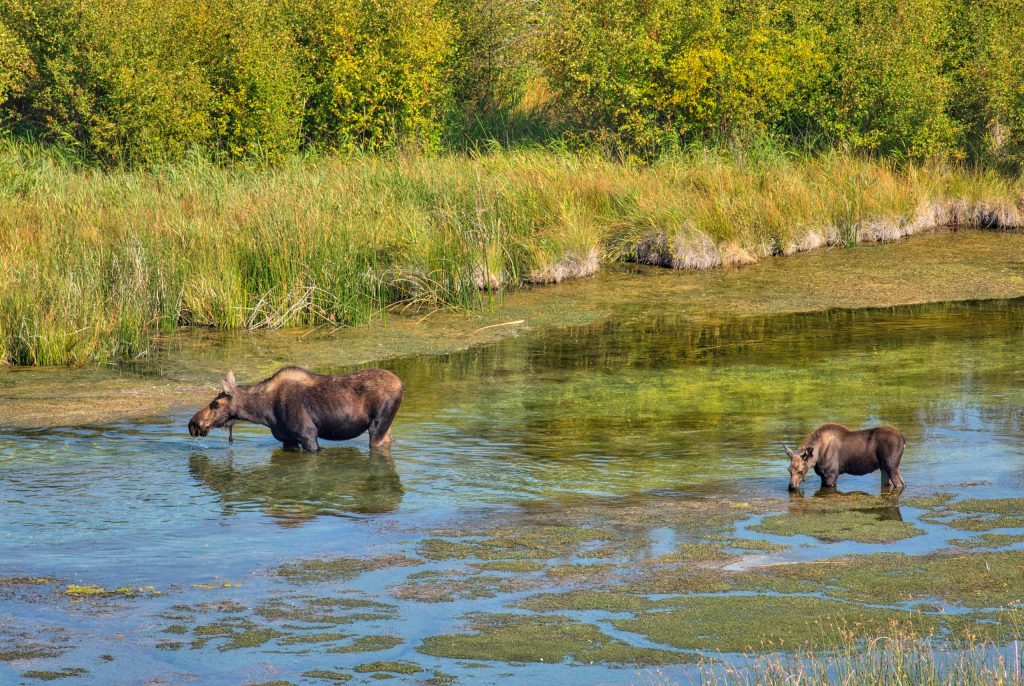



Throughly enjoyed that observation – like being there. I found myself being greedy though…. and wanted you to walk the bank to see what was around the next bend. I do love those experiences, shared or alone, and relish the cathartic way we are rejuvenated by nature and engaging in the outdoors.
Terrific piece, Matthew. I too treasure Silver Creek and the time my wife and I spend there each October as volunteer docents.
Several specific comments:
“The Conservancy acquired 479 acres along the creek in 1976, its first major acquisition in the Western United States.” That’s not accurate, as TNC had many prior acquisitions in the West, starting in the mid-1950s when TNC acquired its first piece west of the Mississippi in northern California and established the Heath Angelo-Northern California Coastal Preserve, which now is part of U of CA’s research station program. That transaction took much of TNC’s then Board of Directors’ time over many Board meeting to digest such an endeavor. Other projects in the West prior to 1976 include: McCloud River Preserve (CA-1973); Marincello & Wheelwright PreserveS (CA-~1970, setting anchors in the Marin Headlands for the creation of the Golden Gate National Recreation Area (Gulf Oil’s Reston, VA development sub. had approval for a planned community of 25K people at Marincello right across the Golden Gate Bridge from San Francisco; the Seven Sacred Pools at Kipahulu, Maui, Hawaii, for an extension of Haleakala NP (Charles Lindbergh and others were featured in a front page center column in the WSJ article on this in ~1969-1970), and many more…at the age of 78 my memory fades…
Keep up your fine work! Henry Little, San Francisco
Well Matt, you’ve done it again. Leaving me at the end of your post sitting with an unfocus gaze, thinking of the joy being outside can bring, the special places I’d like to return to.
But I also think of the small excesses enjoyed while getting to this point in life and my contribution to our changing climate. These days I try to stay within electric driving range of home and visit the plentiful local conserved properties, including TNC preserves. Probably much easier to do in MidCoast Maine than in Idaho. For now the far away places come to me by the dozen nature and science bloggers I read. I do hope the day comes when I can take an electric trip to visit some old haunts and perhaps even Idaho.
Thanks, Steve
Always dries (don’t go wet) in the Creek, emergers, cripples, duns, spinners, worked for 22 straight days this month, elk are bugling, sandhills practicing their flights, Aspen grove is turning, snow up north, all the little birds are brown, 6X tippet and a #24 Baetis Sparkle Dun. And keep your distance from moose as they are a wild animal.
I’ve worked on conservation projects internationally for decades, and Silver Creek is one of the great places on earth. Thanks for taking us back for another visit.
Back in the 60’s we lived in the area (Bellevue). Silver Creek was one of my dad’s favorite places to fish for Rainbow Trout.
Sounds like a wonderful day in a wonderful place! I hope it continues to be healthy & cared for.